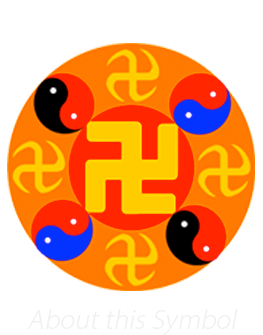(Clearwisdom.net) Over the past four years, Falun Gong practitioners inside and outside of China have published countless articles on Clearwisdom.net revealing the truth about the persecution of Falun Gong practitioners. While reading the facts of the persecution, I often ponder how we can clarify the truth about the persecution from the perspective of one of the world's hottest topics -- economics.
Shall we start debating over the real state of China's economy with economic theories? For example, when someone claims that China is on its way to the prime of economic prosperity, shall we publish articles that say the opposite? When someone publishes statistics from questionable sources that show China's economic growth, shall we find other statistics that show the opposite? While it is necessary to continue these efforts to help people wake up from the myth of China's economic growth, we must also reveal the dark, hidden sources of China's economic revenue to western societies.
I have noticed that western human rights organizations often have special awareness-raising programs. If you pay enough attention, you will often find all kinds of awareness programs, awareness days, or awareness projects around you. This gave me an idea. Why not create truth-clarification materials for western societies that raise awareness of the dark factors behind China's apparent economic success? As a start, I think enslavement would make a good topic for an awareness-raising project.
An article could read as follows: Enslavement in Forced Labor Camps:
The forced labor camp is a machine of corporate fascism. With an endless supply of enslaved Falun Gong practitioners and no worries about their availability, the captive workforce is driven to the limit, regardless of whether the incarcerated practitioners are sick, disabled from being beaten, or weakened by the intolerable conditions. There is no concern for living conditions because any improvement in the conditions would subtract from profits. Illegally incarcerated Dafa practitioners are simply treated as objects from which to extract the maximum amount of labor, to be discarded when worn-out, and replaced with new ones.
As for writing these truth-clarification articles, there have been some good suggestions published on Clearwisdom.net. I was most inspired by the following sentence from one of the articles: "We should be able to convince our readers that our articles are completely truthful even when they are enveloped by Jiang Zemin's poisonous deceit."
I would like to add one more thing to the list of suggestions. I don't think we should just describe the facts of the enslavement of Dafa practitioners in arbitrary order. We might have difficulty in attaining our goal of helping our readers step out of their conventional thinking if we write like this. People in western societies are highly influenced by empirical science, and always have to have evidence placed right in front of them before they start to consider the issue seriously. When it comes to the task of clarifying the truth about the persecution to western societies, we often have difficulty making progress because westerners tend to judge the severity of the persecution by the number of verifiable victims. This criterion makes it harder for them to awaken, because the Chinese Communist government maintains a tight information barrier, making it difficult to obtain accurate statistics of the actual number of victims in this persecution. Because of the information barrier, we must try to work on the "quality" of the truth-clarification articles instead of publishing a large "quantity" of articles. Each article revealing the persecution should be more powerful than 10,000 strictly empirical articles. No matter how much information Jiang Zemin's regime is hiding from the world or how many lies it has manufactured, the readers will know the truth about Falun Gong and about the persecution against Falun Gong after reading just one well written article revealing the persecution.
Although we should try to include all information relevant to a documented case of persecution, we do not necessarily have to wait until every piece of information is available to write an article about it. In other words, one does not necessarily need to include the six W's, namely, who, what, when, where, why and how, though it is ideal to do so. It would be a good idea to also include illustrations and photographs.
I have noticed that our fellow practitioners generally provide more complete descriptions of torture methods than of enslavement practices. They sometimes even forget to mention what types of products the practitioners were forced to produce. It was as though they did not consider enslavement to be a type of torture. It is my humble opinion that this has been a loophole in our truth-clarification work.
I think it is high time we raised the awareness the people of western societies have of the human rights violations against Falun Gong practitioners in China. It is important to bring to their attention the fact that their daily lives have become a part of the persecution food chain, because enslaved Falun Gong practitioners are forced to produce export products that they consume. Especially when there are a lot of economic ties between China and western countries, it is absolutely crucial that we present to western societies a large number of facts of enslavement in Chinese forced labor camps. Meanwhile, publishing articles about enslavement practices containing the torturers' names, cities, provinces, and contact information will shock these perpetrators and hopefully deter them from their vicious activities. I believe this may reduce or even eliminate enslavement in forced labor camps. I hope that western countries will place economic pressure on China as an approach to oppose enslavement. If possible, we may suggest to the EU, the United States, Canada, Australia and other democratic countries that they impose humanitarian taxes on China's export products. China is unlikely to place humanitarian taxes on western countries in revenge because western countries ban enslavement.
I would like to remind fellow practitioners again to include details of the time, place, names of persecutors and their victims, and a complete description of the event when documenting a case of enslavement. It would be a good idea to include the anguish of the victims, the environment and conditions they have to live in, and the brutalities they are subjected to. As I mentioned earlier, one should ideally include information that covers the six W's; namely who, what, when, where, why and how.
One report from the World Organization to Investigate the Persecution of Falun Gong documents how many prisons and forced labor camps in China who are interested in securing work contracts from manufacturers will send out printed advertisements that clearly say the contractor is "XX Prison" or "YY Forced Labor Camp." And the main selling point in their advertisements is "free laborers." If you come across a similar advertisement, please try to take a photograph of it, and mark when you saw it, in which city and province, and which organisation it had been delivered to.
Some labor camp products are even produced exclusively for China's Public Security Bureau. Our sources in China indicate that the safety nets found in Chinese taxi cabs are usually manufactured via slavery. It may appear that they are manufactured by a normal enterprise, but such an enterprise is actually owned by the relatives of the top-level leaders in the Public Security Bureau or State Security Bureau to mask their illegal enslavement business. There are many other products in China that are manufactured via slavery, including cheap handcrafted products, food, toys, machinery, home appliances, and furniture. If you come across a product that is priced way below the market price, it is likely that it was because of free labor. In other words, it is very likely that illegally incarcerated and persecuted Falun Gong practitioners were forced to make this product with their blood and sweat in a forced labor camp or prison.
Views expressed in this article represent the author's own opinions or understandings. All content published on this website are copyrighted by Minghui.org. Minghui will produce compilations of its online content regularly and on special occasions.








